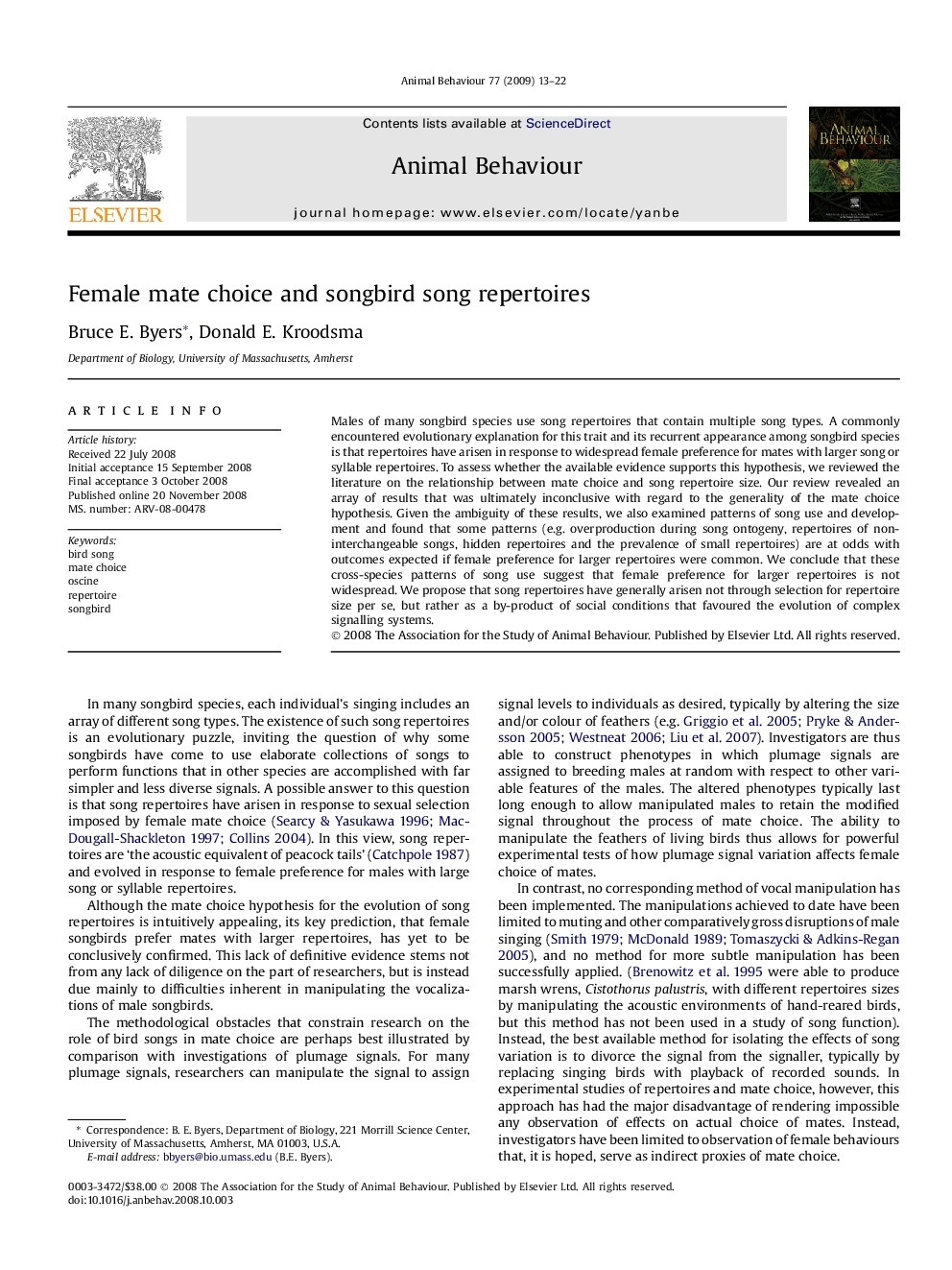| Article ID | Journal | Published Year | Pages | File Type |
|---|---|---|---|---|
| 2418352 | Animal Behaviour | 2009 | 10 Pages |
Males of many songbird species use song repertoires that contain multiple song types. A commonly encountered evolutionary explanation for this trait and its recurrent appearance among songbird species is that repertoires have arisen in response to widespread female preference for mates with larger song or syllable repertoires. To assess whether the available evidence supports this hypothesis, we reviewed the literature on the relationship between mate choice and song repertoire size. Our review revealed an array of results that was ultimately inconclusive with regard to the generality of the mate choice hypothesis. Given the ambiguity of these results, we also examined patterns of song use and development and found that some patterns (e.g. overproduction during song ontogeny, repertoires of non-interchangeable songs, hidden repertoires and the prevalence of small repertoires) are at odds with outcomes expected if female preference for larger repertoires were common. We conclude that these cross-species patterns of song use suggest that female preference for larger repertoires is not widespread. We propose that song repertoires have generally arisen not through selection for repertoire size per se, but rather as a by-product of social conditions that favoured the evolution of complex signalling systems.
